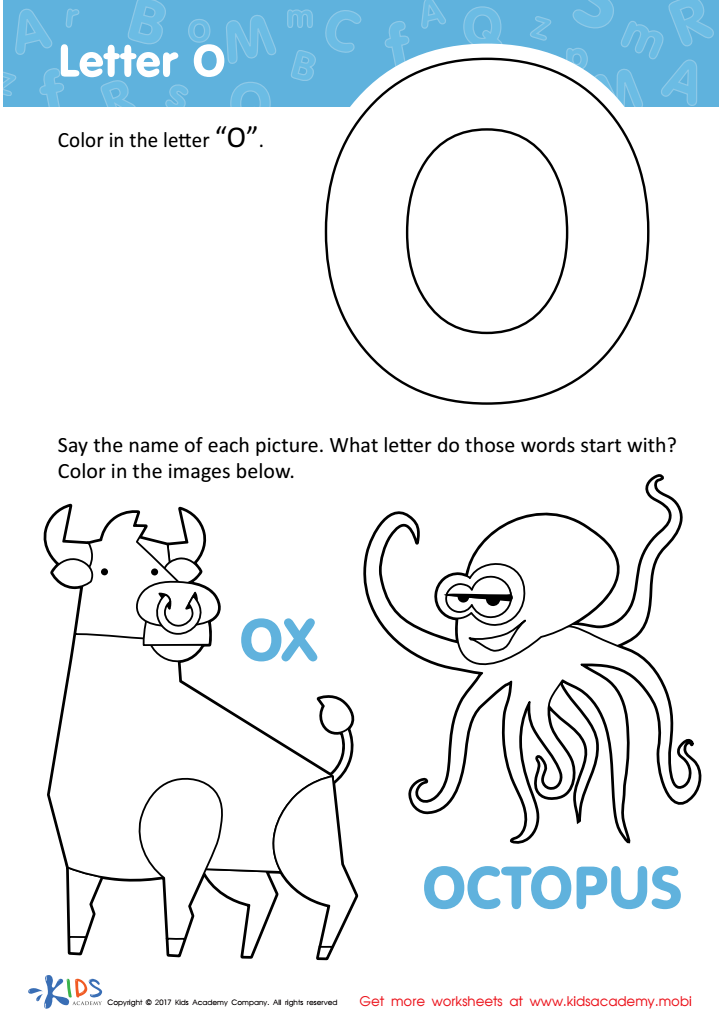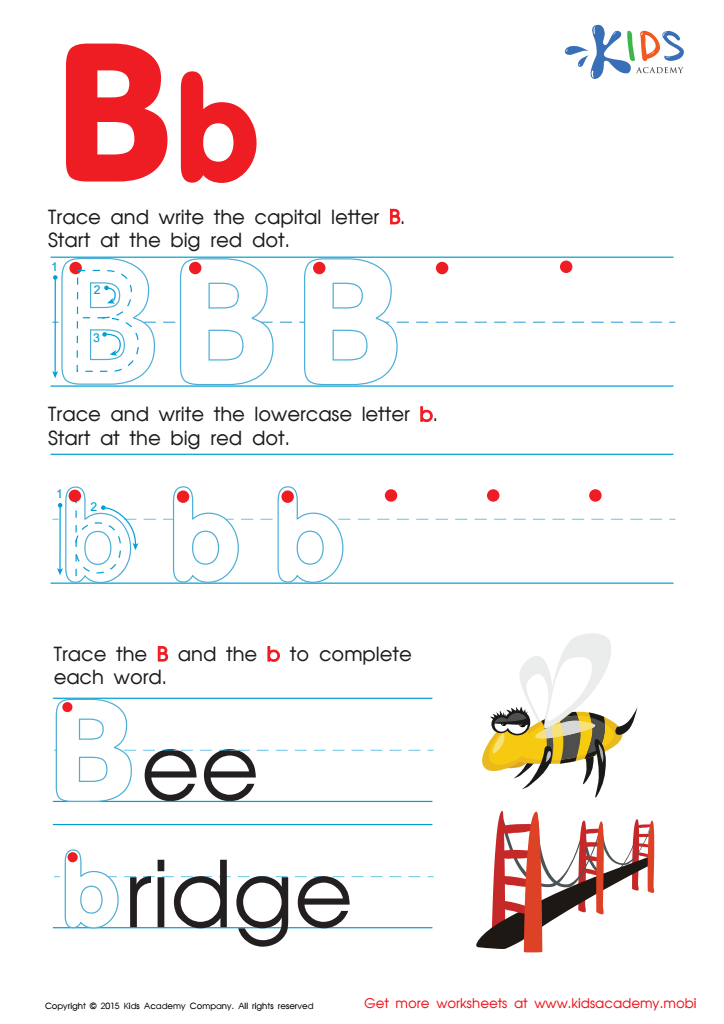Motor skills development Normal Letter Recognition Worksheets for Ages 4-7
3 filtered results
-
From - To
Enhance your child's motor skills and letter recognition with our helpful worksheets designed for ages 4-7. At Kids Academy, we offer a range of engaging activities that promote both coordination and cognitive development. Our Normal Letter Recognition Worksheets allow young learners to practice identifying letters through tracing, coloring, and matching exercises. These fun and interactive resources support fine motor development while building confidence in letter recognition. Perfect for at-home learning or classroom use, our worksheets make essential early education both enjoyable and effective. Download the worksheets today and give your child the foundation they need for successful literacy skills!


Letter H Tracing Page


Letter O Coloring Sheet


Letter B Tracing Page
Motor skills development and normal letter recognition are pivotal for children aged 4-7, influencing their overall learning and growth. During this critical period, children refine both fine and gross motor skills, which are essential for everyday tasks and academic success. Fine motor skills, like gripping a pencil or using scissors, aid in letter recognition and writing, while gross motor skills enhance hand-eye coordination and overall physical coordination.
Parents and teachers should prioritize these abilities as they form the foundation for literacy and communication skills. Mastering letter recognition is crucial for reading and writing; the inability to recognize letters can lead to frustration and hinder a child's confidence in school. Moreover, developmental milestones in motor skills are closely linked to cognitive and social-emotional growth. When children develop these skills, they are more likely to engage confidently in group activities and effectively express their thoughts and feelings.
By actively supporting children’s motor skill development and encouraging normal letter recognition, parents and teachers lay the groundwork for academic achievement and lifelong learning. Engaging in activities that promote these skills fosters a positive learning environment, empowering children to navigate the world with dexterity and confidence.

 Assign to My Students
Assign to My Students
















